Absolutely Brilliant!
The British company Codemasters, best known for the Game Genie, didn’t let a pesky lack of license get in the way of creating some of the NES’ best games.
Hey guys, Ernie from Tedium here with another piece from David Buck, who’s become something of a megafan of a video game company that wasn’t afraid to break the rules.
1986
The year brothers Richard and David Darling formed Codemasters in the United Kingdom. Originally, they released a bunch of simulator games—BMX Simulator the first among them—and later branched out into other types of games, eventually becoming one of the UK’s most recognized video game brands.

Codemasters founders Richard and David Darling. (via the Kwalee blog)
Codemasters’ bread and butter was very much in the British computer market … at first
The Darling brothers possessed a keen business sense and knew they had to create a large number of games to successfully compete in an already crowded market. They decided upon budget games simply because it would help them build a larger audience who would start to collect their games. They weren’t wrong (more on that later). The brothers were already successful from previous games for Mastertronic that they’d programmed themselves, so they formed Codemasters with a little bit of financial help from their father.
In their native England—where the NES wasn’t as popular—Codemasters released a successful line of budget games for the Commodore 64, ZX Spectrum, Amstrad CPC and other 8-bit computers of the era. The catch here is that Codemasters believed in creating budget-priced games that were full-price quality. Because of this work ethic, they surged in popularity. Unable to keep up with just a few programmers creating the large number of games they’d been working on, they got a little bit of help from freelance coders.
“I wasn’t very keen on it, but I couldn’t convince them not to. We thought we’d give them the benefit of the doubt and they came back a few months later with Dizzy.”
— David Darling, in an interview for Grand Thieves & Tomb Raiders: How British Video Games Conquered the World, a book by Rebecca Levene and Magnus Anderson, discussing his apprehension at the Oliver twins’ idea for “a cartoon character based on an egg.” The Oliver twins moved forward with their idea and one of the UK’s most recognizable video game characters, Dizzy the Adventurer, was born. Dizzy helped propel Codemasters to larger successes in the United Kingdom—he’s incredibly popular across the pond—but is sadly vastly underrepresented on the NES.
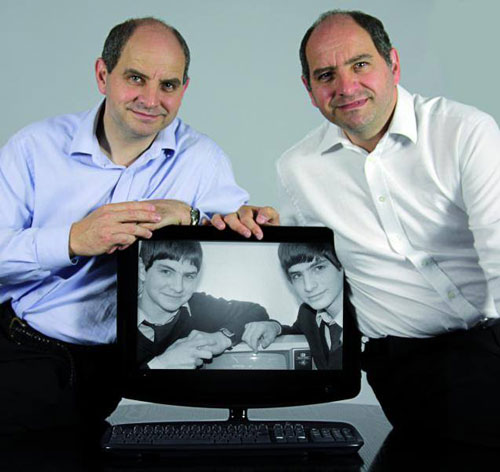
The Oliver Twins, makers of the famed Dizzy series. (via Facebook)
The other pair of brothers key to Codemasters’ success
Though the Darling brothers started and ran Codemasters, there were two other brothers—the Oliver Twins—who became integral to their early success. When they teamed up with the two coding extraordinaires, their popularity really took off. The first Oliver Twins game, Super Robin Hood, performed well for Codemasters and they were contracted to write more software for the company. They continued their successful programs with titles like Ghost Hunters—which ran on a modified version of the Super Robin Hood game engine—for the Amstrad CPC (also on the Speccy). In 1987, they created the now famous Dizzy character, who would go on to star in numerous games and create a few spin-offs.
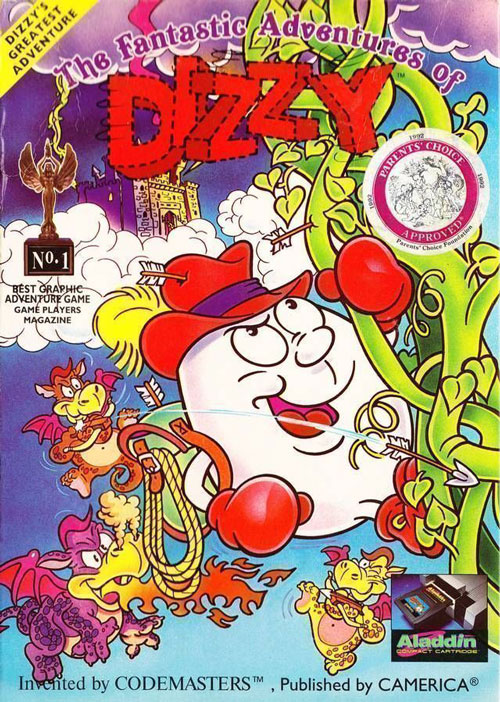
In 1989, they began using Nintendo development kits to “create the best Dizzy game for the Americans,” which eventually became The Fantastic Adventures of Dizzy. Unfortunately, the game release missed the all-important Christmas release window because of the infamous Game Genie lawsuit. This resulted in the game being released the following April (1991), selling only 125,000 of the expected 500,000 copies. Eventually, the Oliver twins parted with Codemasters and went into business for themselves. Their time with Codemasters is marked with success and told in great detail in The Story of the Oliver Twins from Fusion Retro Books, well worth reading for any fan of Codemasters, Dizzy and any of their other amazing work.
10NES
The lockout chip Nintendo used to prevent unlicensed cartridges from running on their NES hardware. On the original, “toaster” NES, the 10NES was the name of a CIC (Checking Integrated Circuit) chip that helped Nintendo maintain a firm hold on the quality of their licensed titles. Essentially a lock and key mechanism, the console chip acted as a lock, while the chip inside a licensed cartridge acted as a key. While there are several ways to disable the lockout chip, some unlicensed companies came up with some rather creative ways—and as a result, some hardware innovations—to get their own titles to play on the console.
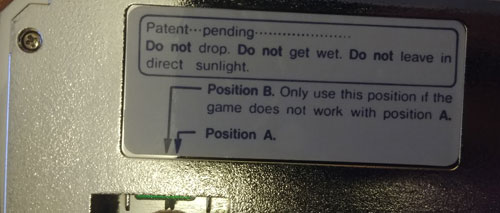
The original A/B testing. (photo by author)
To break into the American market, Codemasters had to switch things up on the NES
The story of Codemasters in the United States begins with a company called Camerica. Founded by David J. Harding in 1988, the Canadian game publishing company held the rights to publish most Codemasters titles in the United States. There was only one problem—Camerica was not a licensed publisher for NES games. During the NES era, Nintendo was notorious for running potential licensees through the wringer as a form of quality control. In response to this, companies like Tengen and Color Dreams developed their own hardware and designs to bypass the 10NES lockout chip. Tengen went the hardware route by illegally obtaining the patent information and reverse engineering their own chip, dubbed “the rabbit.” (The situation led to a lawsuit that Atari Games, Tengen’s parent, lost.)
Color Dreams disabled the chip by generating a pulse of low voltage, in complicated ways, less complicated ways and a mix of the two. Camerica had to do something with the US hardware to enable their games to work on Nintendo hardware.
In the UK, Codemasters released some of their initial NES titles—like Micro Machines—as a “plug through”-type cart. This was similar to the Game Genie in design and had to be used with a licensed cart to bypass the lockout chip. Eventually, they came out with a unique solution for the NES—a switch on the back of each cart. The switch essentially crashes the 10NES chip. NES developer Kevin Horton of www.kevtris.com puts it succinctly:
The infamous switch on the back of the cart simply connects the negative supply to the cart edge. Toploaders will NOT be happy if it is turned on! This will cause the circuit to draw tons of current, which will most likely fry it if the console is left on too long. On my console, it causes the screen to go black with grey wavy lines, and the audio produces a loud buzz.
I have personal experience with this wonkiness, thanks to my childhood copy of Mig 29: Soviet Fighter. One day, I was on a hot streak—blasting enemy planes out of the arctic sky and preparing for close combat with the enemy aircraft carrier at the end of the mission. The game switched from the flying mode to the birds-eye view and suddenly, my screen flashed. Blue light engulfed the screen and the NES light began blinking red. The game never worked on that particular NES again, though it did work on a later model.
Despite a few successes, it wasn’t smooth sailing for Camerica. Not only was there a major lawsuit over the Game Genie (which we covered in 2015) between Galoob (their distributor) and Nintendo, but Camerica was also sued by Nintendo at different points for releasing two NES joysticks—the Freedom Stick and the Turbotronic—that bore a remarkable similarity to Nintendo’s own NES Advantage joystick controller.
Camerica, likely in no small part due to its outsider status, took its marketing in a lot of interesting directions, including by using Nintendo’s own “golden boy,” 1990 Nintendo World Championships winner Thor Aackerlund, as its official spokesperson. My copy of Mig 29: Soviet Fighter features this line emblazoned right on the top right corner: “World Champion Thor Aackerlund’s GAME OF THE MONTH!”
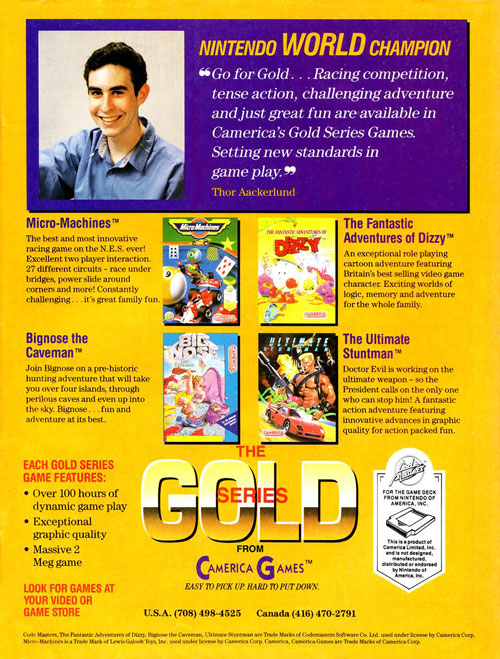
(Internet Archive)
Codemasters is notorious for making some interesting—and possibly made up (or at the very least, hyperbolic—boasts on their game packaging, but these bits from Thor do seem to be genuine.
Another way that Camerica’s marketing stood out? The company sold its products, including Micro Machines, on the Home Shopping Network. No other company of its era did anything like that.
Ultimately, though the Game Genie was a success for the company, Camerica itself folded around 1993, following the failure of the Aladdin Deck Enhancer peripheral. Codemasters went on to release many of their NES titles in the UK, with subtle alterations and different colored carts.
“I am a completionist at heart—and when I saw collections like AVGN I just loved the idea of having a working copy of everything NES related. It’s a bottomless pit though once you get into unlicensed and bootleg companies—like Codemasters. Thankfully their collection isn’t too large but they were such a unique group with their odd cartridges and styles. But they were fun to hunt down!”
— Christopher Clarke, a Codemasters and NES collector known as TorridZone17 on Nintendoage. Clarke has an extensive NES collection, but didn’t know much about the company until he began collecting, as much of their stuff never came out in his native Canada—other than the Game Genie, of course.
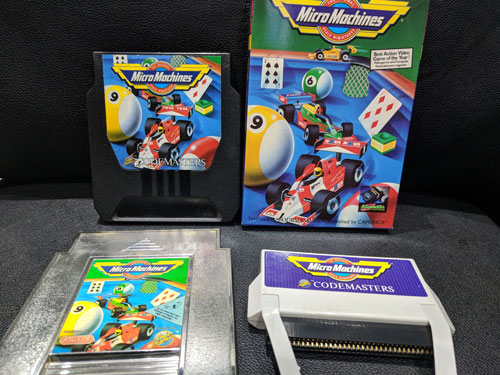
Three different variants on Micro Machines. (via Christopher Clarke)
There’s a subculture of gamers dedicated to collecting Codemasters games
For ZX spectrum, Amiga and Commodore 64 fans, collecting Codemasters titles seems to be a popular subject. The July 2017 issue of Retro Gamer Magazine featured a Codemasters collector’s guide, covering rarity, top picks and a few fan interviews.
Compared with the over 100 titles mentioned in that magazine’s pages, the NES only saw a total of thirteen games—Bignose the Caveman, Bignose Freaks Out, Bee 52, Fantastic Adventures of Dizzy, Firehawk, Linus Spacehead’s Cosmic Crusade, Mig 29: Soviet Fighter, Micro Machines, Quattro Adventure, Quattro Arcade, Quattro Sports, Stunt Kids and Ultimate Stuntman.
The Quattro titles combine four Codemasters games into one cart, making for an ultimate total of 22 titles—23 if we count the Aladdin Deck Enhancer’s Dizzy the Adventurer.
Folks seem to love Codemasters games, but perhaps, it’s not for the reasons we think. I love them because they have a certain charm and exceptional music. Others love them for purely nostalgic reasons and some enjoy the novelty factor.
Per Clarke: “Favorites is the wrong word when you are collecting unlicensed titles. So bad they are good is more like it. I just enjoy finding people who want to pick a cart off the shelf and try something out. Who wouldn’t want to play a game called Bee52 that looks like a Zelda cart?”
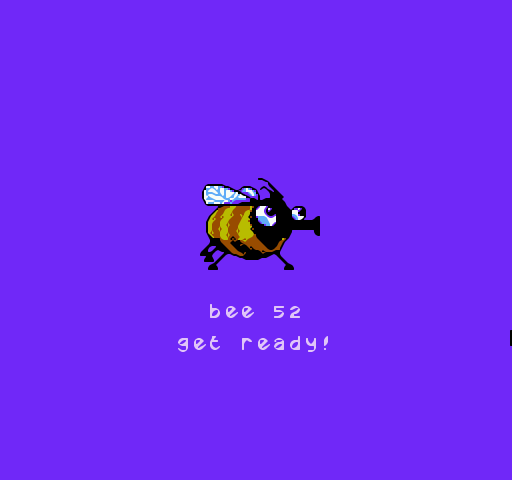
Tedium’s top five Codemasters games for the NES
1. Bee 52: In this hilarious and fun title, you play as a bee collecting honey through various locations. Armed with your stinger and some sort of shooting weapon— I think it’s supposed to be saliva (no one said this was going to be biologically accurate) — you buzz your way through the yard and various obstacles. Spiders, ants, caterpillars and the dreaded sprinkler await you in Bee 52!
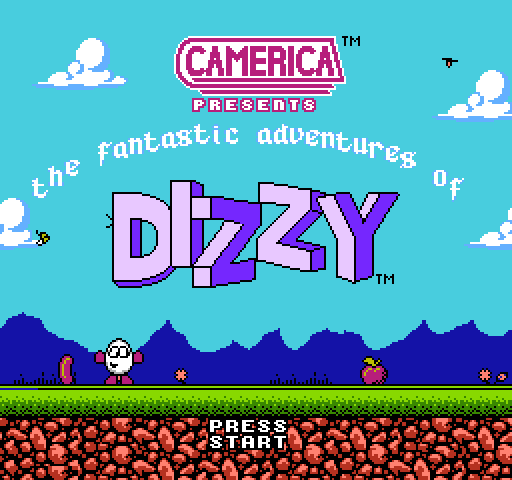
2. Fantastic Adventures of Dizzy: Perhaps one of the longest and most satisfying games in this series, Fantastic Adventures of Dizzy takes you on a wonderful journey through the land of the Yolk Folk. Meet Dizzy’s friends across the kingdom as you solve puzzles and play some fantastic mini-games along the way.
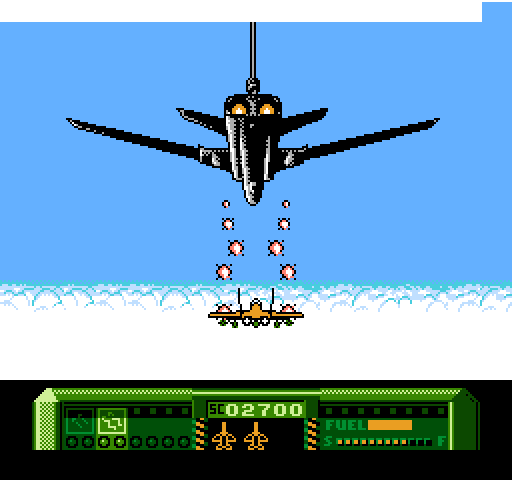
3. Mig 29: Soviet Fighter: Originally released on the Commodore 64, this flight simulator married the gameplay of Afterburner and Space Harrier with an alternate version of post-cold war history to create a rather enjoyable shoot ‘em up experience. Take on the World Terrorist Army and defeat the evil Colonel Crackov over six high-octane missions around the world!
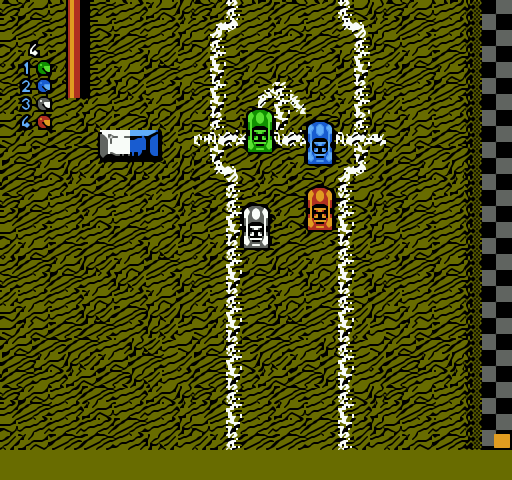
4. Micro Machines: Perhaps one of the most popular and best-known games by Codemasters, Micro Machines is a fun racing game with a unique setting. Drive various micro cars, boats and more across macro environments. It’s a blast to drive a tiny car across a school desk and face off against the weird other players as you go. A version of “Smoke on the Water” plays prior to each race and, hey, it made The Guardian’s top 30 games of all time in 2014, so it’s certainly a beloved franchise today. It’s also David Darling’s favorite Codemasters game.
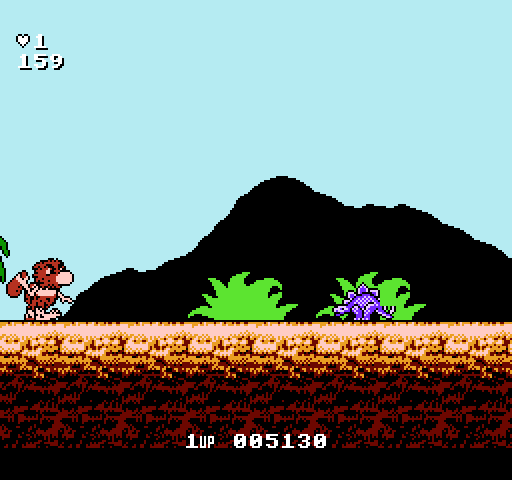
5. Bignose the Caveman: It’s like Adventure Island meets Joe & Mac! You take control of the titular caveman as he bashes his way across an island. Terrorize the small dinosaurs with your club and throw rocks at the enemies, all while collecting bones to spend at the hidden shops across the island. It’s certainly a trip and spawned a sequel, Bignose Freaks Out. Worth noting is the strange Bignose game found by NintendoAge member Dr. Morbis at a flea market, called Bignose and the Witch Doctor. It turns out that it’s just a heavily modified copy of Freaks Out, not a prototype game. Read more about it here.
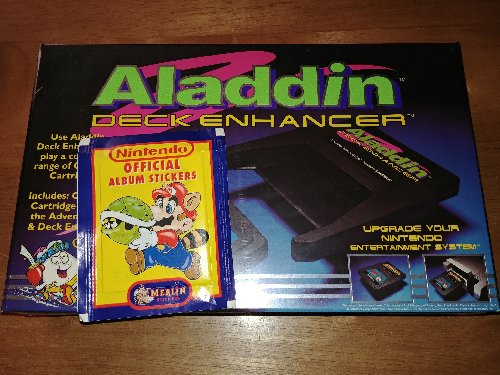
(Photos by the author)
The strange case of the Aladdin Deck Enhancer, one of the NES’ most unusual add-ons
It seemed like a good idea at the time. Following the success of the Game Genie, Camerica developed a device that would enhance your NES games and make them cheaper! The Oliver twins were on board with the idea of the Aladdin, per their official history:
Games were very expensive to produce on the NES. For the first few years NES games looked quite poor until cartridges were designed to allow the video memory to be RAM rather than ROM, so games programmers could reassign graphics between levels and greatly increase the diversity of the graphic content of their games. The RAM and extra circuitry and the lock chip were all adding to the physical cost to manufacture the games, putting them at around $30 at retail. Codemasters came up with the idea of putting all this into one generic cartridge into which cheaper games could be plugged.
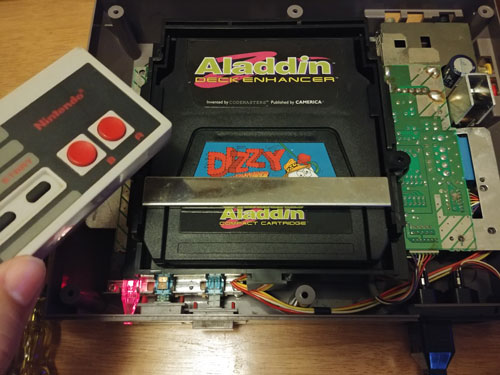
Because of the hardware changes, the thing was a steal at $40 for the cart itself and $20 for the games. Camerica announced a 17-game lineup that never came to pass, but what remains are working Aladdin Deck Enhancer units with the pack-in title Dizzy the Adventurer and six additional compact game carts—Micro Machines, Fantastic Adventures of Dizzy, Quattro Adventure, Quattro Sports, Linus Spacehead’s Cosmic Crusade, and Bignose Freaks Out.
The hardware was supposed to sell a ton of copies and be extremely successful … but something went wrong.
Shipping and delivery issues resulted in some folks not getting paid...and Camerica went bankrupt. No one knows how many units were shipped or exist in a warehouse somewhere, but people keep finding new old stock and selling it online. Martin over at NES World breaks it down quite well in his wonderful write-up on the unit.
Perhaps the strangest thing about the Aladdin Deck Enhancer is its ready availability. Seriously, you can buy one of these things on eBay for an extremely low price, including the six available games. We spoke with an eBay seller (name withheld at their request) who confirmed they’d purchased their stock of Aladdin’s and games—new old stock—from a wholesaler. They believe there are still “plenty of them out there.”
While I love my Aladdin Deck Enhancer, it seems most casual retro gamers, may see the device as more of a novelty than anything else. Collector Chris Clarke put it best:
You are never going to find a person who wants to buy a system to use their other system to play a whole library of six games. Sega didn’t learn this lesson with the 32x a few years later. An Australia company called HES also had a peripheral called the unidaptor that was required to play their games too—they had much the same success until they built their own plug thru tech. All these unlicensed producers were trying to use tech they had no control over—it was a pipedream to think people would take so many extra steps to play their titles.
The hardware itself didn’t do much “enhancing” either; it was just a regular game cart with the ROM removed. Playing my own and comparing titles, I can confirm this—unfortunately, no true enhancements seem to be evident.
In 2007, the Darling brothers sold their remaining shares in Codemasters and moved onto other projects.
David renovated his house and began working with Kwalee, while Richard also moved onto other projects. In 2017, the Oliver Twins released a brand old Dizzy title, Mystery Island Dizzy. Codemasters is still going strong, releasing mostly racing games.
For a short time, Codemasters and Camerica made its mark on the old gray box here in the States and eventually published a variety of titles across other platforms throughout each console generation.
Things may be coming full circle, however, with the Nintendo Switch, as Codemasters recently teased a possible re-release of Micro Machines on that console.
Until that time comes, however, I’ll be sitting in my game room, square controller in hand, still trying to find that secret nighttime flying mode—in between micro races, of course.
:format(jpeg)/2018/06/tedium061418.gif)
/2018/06/tedium061418.gif)

/uploads/david_new.jpg)